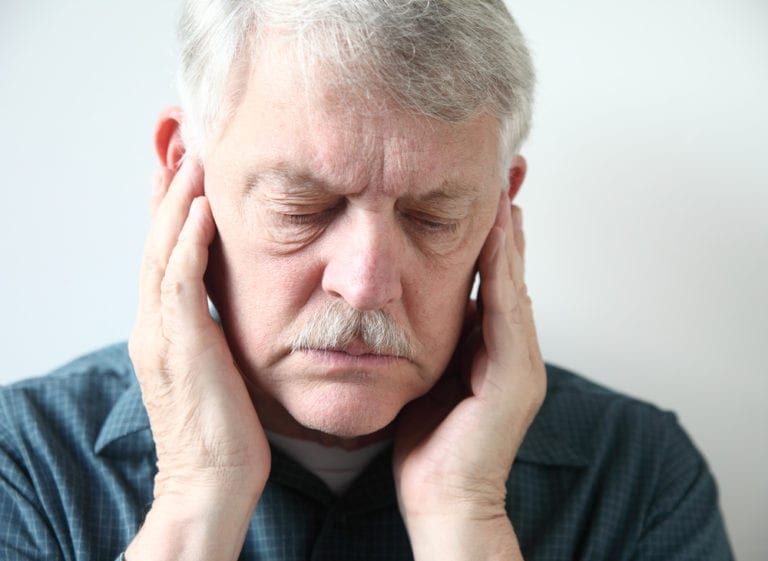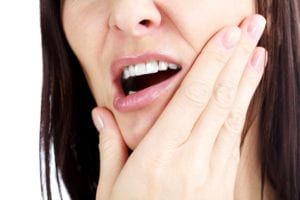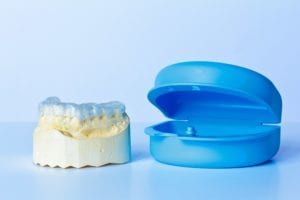TMJ Treatment

Temporomandibular joint dysfunction or disorder (TMD) occurs when the joint, muscles, ligaments, tendons, blood vessels, or adjacent tissues become dysfunctional or painful. The temporomandibular joint (TMJ) is the name given to the joint just below your ear on either side of your face. It is sliding hinge joint that connects your lower jaw to your skull and is responsible for chewing, biting, and opening or closing your mouth. Because this joint is composed of various structures such as a capsule, discs, tendons, muscles, ligaments, and nerves, there are many reasons why it could become dysfunctional or painful.
Did You Know?
According to the U.S National Institute of Dental and Craniofacial Research, temporomandibular joint disorder is the second most common pain-causing musculoskeletal condition affecting about 12% of Americans.
Frequently Asked Questions:
What are the symptoms of TMD?

There are various symptoms for TMD including:
-
- Pain and/or tenderness around the jaw
-
- Pain affecting one or both of the joints
-
- Trouble chewing or biting
-
- Pain while chewing or biting
-
- Chronic headaches
-
- Ear pain or ringing
-
- Dizziness
-
- Blurred vision
-
- Muscle spasms
-
- Pain in temples
-
- Shoulder or neck pain
-
- Generalized facial pain (usually an ache)
-
- Jaw joint “locks” up and it becomes hard to open or close mouth
- Clicking or popping sounds when opening or closing the mouth
If you have any of these symptoms, it is recommended to schedule a consultation with Sunset Dental to have one of our dentists evaluate you for TMD.
Can TMD be prevented?
Because the exact cause of TMD is not always known, it is hard to prevent it. Some possible causes such as connective tissue disease, arthritis (degeneration of the disk and cartilage), and structural issues may not be preventable. However other causes such as traumatic injury, frequent grinding or clenching of the teeth, or misaligned bite may be able to be treated accordingly, reducing the risk of developing TMD.
How is TMD diagnosed at Sunset Dental?
To diagnose your TMD, our dentists will first discuss your symptoms, medical history, and current medications. They will likely ask you to define how long you’ve been experiencing symptoms, what symptoms you are having, how often you experience symptoms, how severe they are, and if you’ve noticed any triggers for the symptoms. They may also ask if you’ve experienced TMD problems in the past and about your stress levels.
Then, our dentists will examine the structure and function of your teeth and bite. They will check for signs of inflammation by palpating certain structures while you open and close your mouth. They will also listen for popping, clicking, or grinding sounds that could indicate problems within the joint.
Diagnostic imaging may also be used to get a better look at the internal structure of the jaw. In most cases, dental x-rays are enough to determine if there is a problem with the joint, however some cases may require the use of CT or MRI scans. In rare cases, TMJ arthroscopy may be required. During a TMJ arthroscopy, a tube is inserted into the jaw joint. A tiny camera attached to a scope travels down this tube and into the jaw joint to obtain images of the inside of the joint.
What treatments are available for TMD at Sunset Dental?
There are a few ways that our dentists treat TMD. Your specific treatment plan will depend on your specific case, but may consist of some or all of the following:

-
- Oral Appliances (night guard): oral appliances are a popular and effective treatment for TMD because they can place the jaw in a more optimal position to reduce additional strain. Wearing a night guard also stops teeth grinding and clenching, which is a contributing cause of TMD symptoms.
-
- Medications: medications are often used to help alleviate painful symptoms and reduce overall inflammation. Because more conservative treatments are preferred, our dentists will start by suggesting a regime of over the counter pain medications. If your case is more severe, or if over the counter pain medications are not effective, stronger pain medications, tricyclic antidepressants used for pain relief, or muscle relaxants may be prescribed.

- Medications: medications are often used to help alleviate painful symptoms and reduce overall inflammation. Because more conservative treatments are preferred, our dentists will start by suggesting a regime of over the counter pain medications. If your case is more severe, or if over the counter pain medications are not effective, stronger pain medications, tricyclic antidepressants used for pain relief, or muscle relaxants may be prescribed.
-
- Botox: although many people associate Botox with cosmetic concerns, Botox is actually beneficial in the treatment of TMD symptoms. While this treatment is still experimental, studies have found that Botox reduces pain and increases the range of jaw motion.
-
- Hot and Cold Therapy: alternating heat and ice packs on the affected area can help to reduce discomfort and inflammation
-
- Physical Therapy: stretching and strengthening the soft tissues around the joint can reduce tension and inflammation, as well as prevent future symptoms. Depending on the severity of your case, our dentists may give you some exercises or refer you to a physical therapist.
- Diet and behavior modification: chewing tough or hard foods, as well as certain behaviors like nail biting, gum chewing, or teeth grinding and clenching, can cause additional strain on the jaw joint. Reducing or eliminating these behaviors can help to rest and relax the joint, lessening symptoms.
Does TMD have a cure?
TMD does not have a cure, but the good news is it can be managed with the treatments listed above. However, treating TMD is sometimes a bit of trial and error, and the treatments can change over time. To properly manage your TMD, you should visit Sunset Dental at least once every six months for your dental checkup. At your dental checkup, your TMD symptoms and treatment plan will be discussed and altered if needed. Additionally, if you start to develop new symptoms, it is important to schedule an appointment and get them addressed before they get worse. Because of this, TMD management does take some diligence.
Most people diagnosed with TMD have a good prognosis and respond well to treatment. Finding the right treatment is the key to managing TMD symptoms. Because of this, our dentists may refer you to outside specialists for certain types of treatments if dental treatments are not working. However, most patients are able to find relief from dental treatments for TMD.
To help relieve your TMJ pain, schedule a consultation with Dr. Jerry Kronquist and Dr. Amanda Rae Kronquist of Sunset Dental Group today. Sunset Dental Group serves Santa Ana and other central Orange County communities.